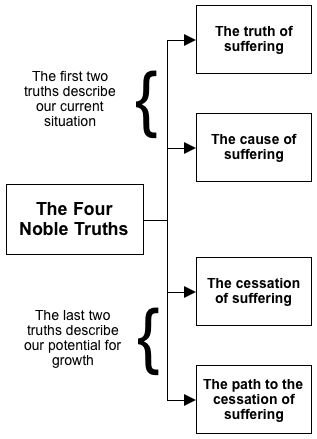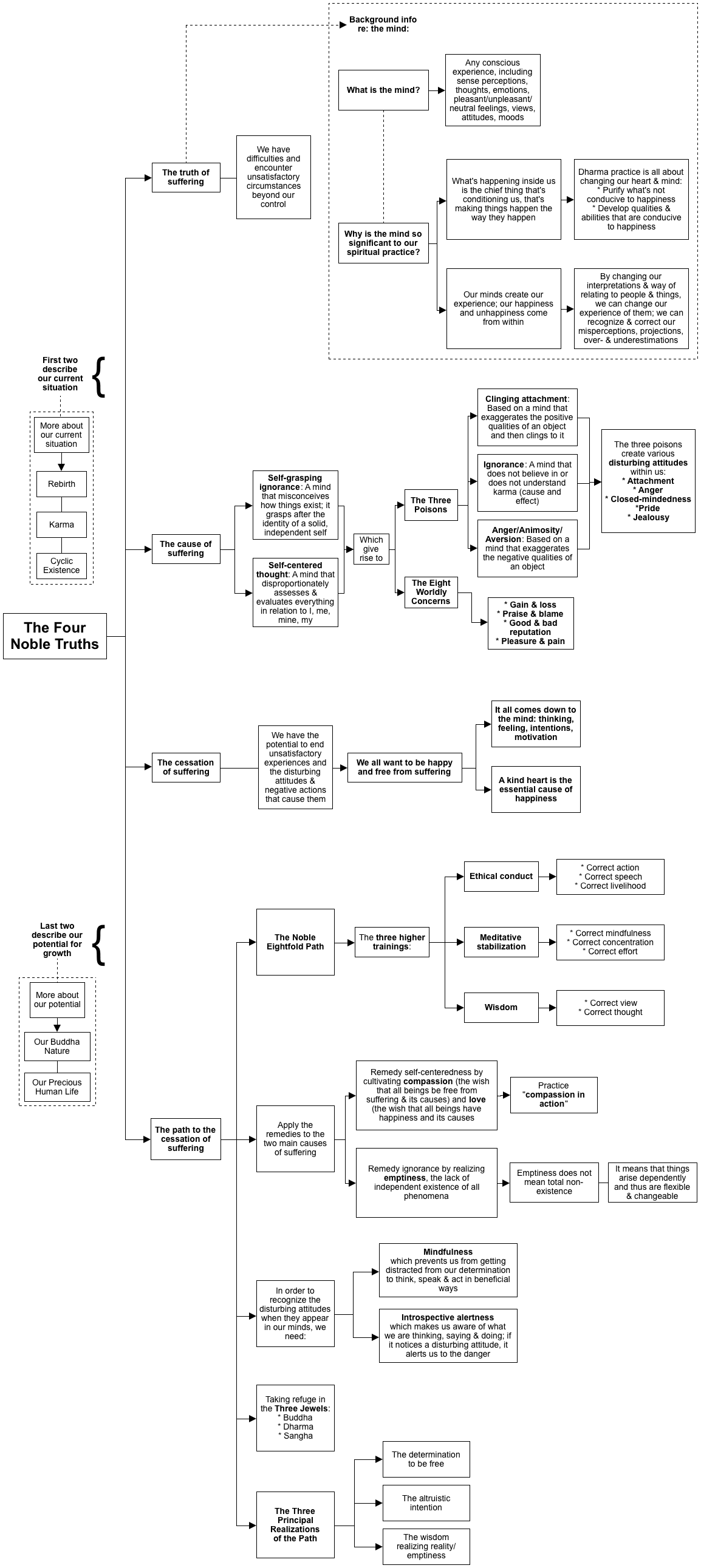Quick Note re: Site Organization
 The Four Noble Truths do a great job of summarizing the Buddha's basic teachings. To paraphrase the truths:
The Four Noble Truths do a great job of summarizing the Buddha's basic teachings. To paraphrase the truths:
- We all experience suffering.
- There are discernible causes of that suffering.
- There can be an end to suffering.
- There is a path to the end of suffering.
So I've organized the site's topics around the Four Noble Truths, as just one possible way to start seeing relationships among the many Buddhist concepts. This organization scheme is evident in the Site Map.
Quick Background
This site is a labor of love. The content is based on the copious notes I took while participating in a wonderful online course about Buddhism. The course was offered by Sravasti Abbey in eastern Washington state. It's part of a four-course series in the abbey's SAFE (Sravasti Abbey Friends Education) program. The course helped me understand several Buddhist concepts so much better (and not coincidentally improved my disposition and behavior!), so I offer my notes here for the benefit of whomever may find them useful.
Big Picture Ideas
If I had to summarize some main "big picture" points from this course, here’s a start:
- Buddhism is not at all pessimistic.
- The Buddha did say that we all suffer. That's not pessimistic; it's realistic.
- His main message is an optimistic, joyful one, i.e., there's a path to the end of suffering and we can be happy.
- Buddhism is practical and non-dogmatic.
- The Buddha didn’t say, "This is what you must believe" or "Don’t do X, Y, or Z—or else!"
- Rather, he observed how things work and said, "If you cultivate skillful and wise thoughts, words and actions and also work to eliminate unskillful and unwise thoughts, words and actions, you will be happier and live with more ease. Try it for yourself and see."
- So the Buddha offered us some guidelines to live by, but always encouraged us to test them in our own experience rather than to cling to his words with blind faith.
- We create our own experience with our minds.
- It's our own thoughts, attitudes, etc. that determine how we experience a given situation, not so much the situation itself.
- We mistakenly believe that all our happiness and pain come from outside of ourselves. Believing this makes us very vulnerable to "blowing with the wind," whichever way it goes.
- We are so prone to distortions, biases, seeing everything through the veil of "me," etc. that we often misperceive how things are and project our misperceptions onto others. Then we base our actions on our misperceptions and projections and wonder why things get so crazy.
- We all want to be happy and free from suffering.
- This is a wonderful equalizer and helps me remember that we're not that different from one another.
- Just as I sometimes speak and act out of a misguided sense of what will make me happy, so do others. Remembering this makes me more patient and compassionate.
- Happiness is very much tied to love, compassion, and helping others—in other words, a kind heart is essential to our own happiness.
- Our self-preoccupation is one of the main obstacles to our own happiness, as well as enlightenment.
- To dissolve self-centeredness, we cultivate compassion (the wish that all beings be free from suffering and its causes) and love (the wish that all beings have happiness and its causes).
A Word re: the Graphic Organizers on Each Page
Creating graphic organizers is my way of trying to explore how concepts connect and then being able to step back and get the "big picture." So each topic page contains a graphic organizer that either is the topic or shows the topic in a larger context. Helpful hint: If the G.O. seems too small to read, click on it; that will take you to a page with nothing but the G.O. on it, so it will be larger.

